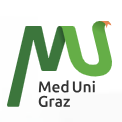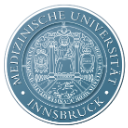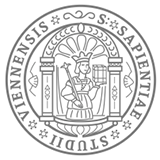Detailed introduction of Medical University of Vienna:
Introduction
The Medical University of Vienna (German: Medizinische Universität Wien) is located in Vienna, the capital of Austria. It is a world-leading public medical university and the university with the largest number of medical students in the German-speaking region. It is one of the most outstanding universities in the world in the field of medicine and has an excellent reputation in medical education, research and clinical practice.
Overview
Student size: There are currently about 7,274 students, including 2,421 international students.
Faculty: With 867 academic staff and 643 researchers, there are 101 international faculty members. The strong faculty team provides a solid guarantee for teaching and scientific research.
History
Founded: The school was founded on January 1, 2004, but its history can be traced back to 1365, when it was a medical school under the University of Vienna.
Important development stage: In the Middle Ages, its medical department was already famous as a medical authority. The opening of the Vienna General Hospital in the 18th century gradually developed it into an important research center. In the 19th century, the "Second Vienna Medical School" emerged, and basic medical science continued to expand and specialties continued to be refined. In the early 20th century, Vienna medicine was at the first-class level internationally, and many scientists won the Nobel Prize during this period. After officially becoming an independent medical university in 2004, it continued to maintain a leading position in medical education and research.
School Strength
Teaching Resources: The school has 26 university clinics, 3 clinical research schools, 12 medical theory centers and numerous sophisticated laboratories, providing students with rich clinical practice and scientific research opportunities. In addition, the school's library has a rich collection of books and complete database resources, which provides strong support for students' learning and research.
Academic Research: As one of the top medical research institutions in Europe, the Medical University of Vienna has carried out extensive and in-depth research in various fields of medicine, and a large number of high-quality scientific research results are published in internationally renowned academic journals every year. The school's research projects cover basic medicine, clinical medicine, translational medicine and other levels, and have made important contributions to the advancement of medical science.
Nature of the institution
The Medical University of Vienna is a public university.
Educational philosophy
It is committed to cultivating medical professionals with innovative spirit, solid professional knowledge and a high sense of social responsibility, focusing on the combination of theory and practice, emphasizing the internationalization and interdisciplinary nature of medical education, encouraging students to actively participate in scientific research activities, and cultivating students' scientific research ability and critical thinking to adapt to the ever-changing development of medical science and social medical needs.
Key laboratories and disciplines
Key disciplines: Outstanding performance in clinical medicine, biology and biochemistry, heart and cardiovascular system, cell biology, endocrinology and metabolism, gastroenterology and hepatology, immunology, infectious diseases, molecular biology and genetics, neuroscience and behavior, oncology, pharmacology and toxicology, psychiatry/psychology, radiology and other disciplines, and many disciplines are at the forefront of international rankings. For example, Gastroenterology and Hepatology ranked 54th, Clinical Medicine ranked 77th, Oncology ranked 63rd, etc.
Key Laboratories: The school has a number of advanced key laboratories, such as the famous top expert institutions in the field of European biomedicine, which provide world-class research conditions for researchers and have achieved remarkable results in research directions such as molecular signal transduction, molecular mechanisms of cell biology, medical physics, and neuroscience.
Department
The school has a number of medical-related departments, including the Department of Clinical Medicine, the Department of Basic Medicine, the Department of Medical Theory, etc., covering various fields from basic medical research to clinical medical practice, providing students with a comprehensive and systematic medical education system.
Ranking
2022 USNEWS World Ranking: 203
2022 THE World Ranking: 201
2024 THE World Ranking: 201-250
2022-2023 Partial Subject Rankings: Biology and Biochemistry No. 105, Heart and Cardiovascular System No. 130, Cell Biology No. 120, etc.
Expenses
Tuition fees: Tuition fees for public universities in Austria are relatively low. The tuition fees for each semester at the Medical University of Vienna are about a few hundred euros, and the specific fees vary depending on the major and degree type.
Living expenses: Living in Vienna, the monthly living expenses are about 1,000-1,500 euros, including expenses for accommodation, food, transportation, entertainment, etc.
Campus
Location and environment: The main campus is located in the center of Vienna. The city has a profound cultural heritage and a strong artistic atmosphere. It has many historical buildings and cultural attractions, such as the Vienna Opera House and Schönbrunn Palace, which provide students with a rich choice of extracurricular cultural life. At the same time, Vienna is one of the transportation hubs in Europe, with convenient transportation, which makes it easy for students to participate in international academic exchange activities.
Architectural style: The campus has a variety of architectural styles, including both ancient buildings with a long history and modern scientific research and teaching facilities. The integration of the two shows the school's long historical heritage and the development vitality that keeps pace with the times.
-

Graz University of Technology
-

Medical University of Graz
-

University of Linz
-

Medical University of Vienna
-

Innsbruck Medical University
-

University of Vienna
-

University of Leoben
-

St. Pölten University of Applied Sciences
-

Vienna University of Technology
-

University of Graz
-

Mesoamerican University
-

Istmo University
-

Mariano Galvez University of Guatemala
-

Regional University of Guatemala
-

Galileo University
-

Francisco Marroquín University
-

Rafael Landívar University
-

University of the Valley of Guatemala
-

University of San Carlos of Guatemala
-

Technological Institute of Tlaxcala Plateau
-

Golfo University
-

Technological University of South Sonora
-

Technological University of Huejotzingo
-

Tizimín Institute of Technology
-

Chilpancingo Institute of Technology
